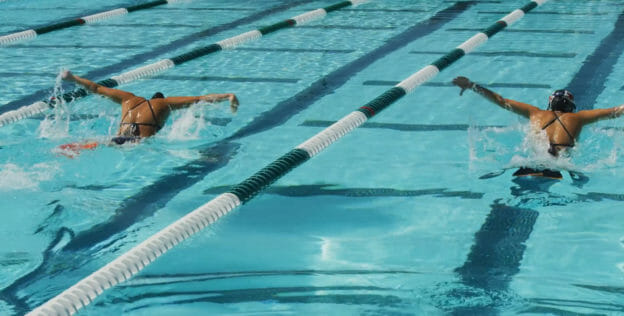400 IM Race Strategy
The 400 Individual Medley is one of the toughest swimming events on the schedule. It requires versatility, incredible stamina, and careful race strategy to do well.
I was a 400 IMer. In fact, I held the world record in that event for five years and was unbeaten for four years straight in major competition. Through my three swim coaches, Doc Counsilman, Flip Darr, and Don Gambril, I learned a lot about pacing the 400 IM. I also made a few costly pacing mistakes, one of which occurred in the Olympic Games of Munich in 1972.
This week on our live Youtube Race Club broadcast, we discuss the pacing of elite swimmer and IMer, Carson Foster, who just missed making the 2021 Olympic Team in the 400 IM. After the Olympic Games, Carson swam the event again in Austin, Texas, with a time that would have won the Olympic gold medal. Instead, because of some overzealous pacing in Omaha, he had to settle for a pat on the back. It was a tough but valuable lesson.
I am one of an extinct breed of good IMers, those who could not do breaststroke well. Today, the IM events are owned by the breaststrokers. Building a great IM starts with having a strong breaststroke and ends with being good in all four strokes. In other words, the best IMers today have no major weaknesses, and they must train hard. The IM can be won or lost in any one of the four strokes, but most of the time, it is won (or lost) in the breaststroke.
Part of that IM training is learning how to pace the event well. As I was learning to pace myself better in the 400 IM, one of my tricks was negative splitting each 100. Particularly in qualifying heats, when I was trying to conserve some energy, I found going moderately hard on the first 50 and harder on the second 50 meters was a good way to do that. After the difficulty of starting with a 100 fly, I often found a second wind on the second 50 backstroke, using the first 50 to ‘recover’ a bit from the fly. This is a good technique to learn how to control your pacing in the 400 IM.
Another controversy in the IM is the transition from backstroke to breaststroke. This week, we re-released an introductory video on how to do the crossover transition for the IM. In the 400 IM, most elite swimmers use the crossover transition, the fastest technique to get into the breaststroke. A few still do open turns.
If a swimmer does use a crossover transition, it requires considerable practice and aerobic capacity to do well. Another controversy is whether to use a full breaststroke pullout or a dolphin-kick-and-up technique after the transition. Our studies have found that the latter is often slightly faster than the former, but not always. We are now seeing more swimmers forego the full breaststroke pullout in favor of the shorter technique so that they can get that coveted next breath of oxygen sooner.
Learning to pace the 400 IM well is learned in both practice and racing. Both are necessary. Two things are certain, however. If you want to swim the IM well, you must train the IM, doing lots of switching strokes in practice. You must also develop a strong breaststroke without having any significant weak strokes.
Yours in Swimming,
Gary Sr.

